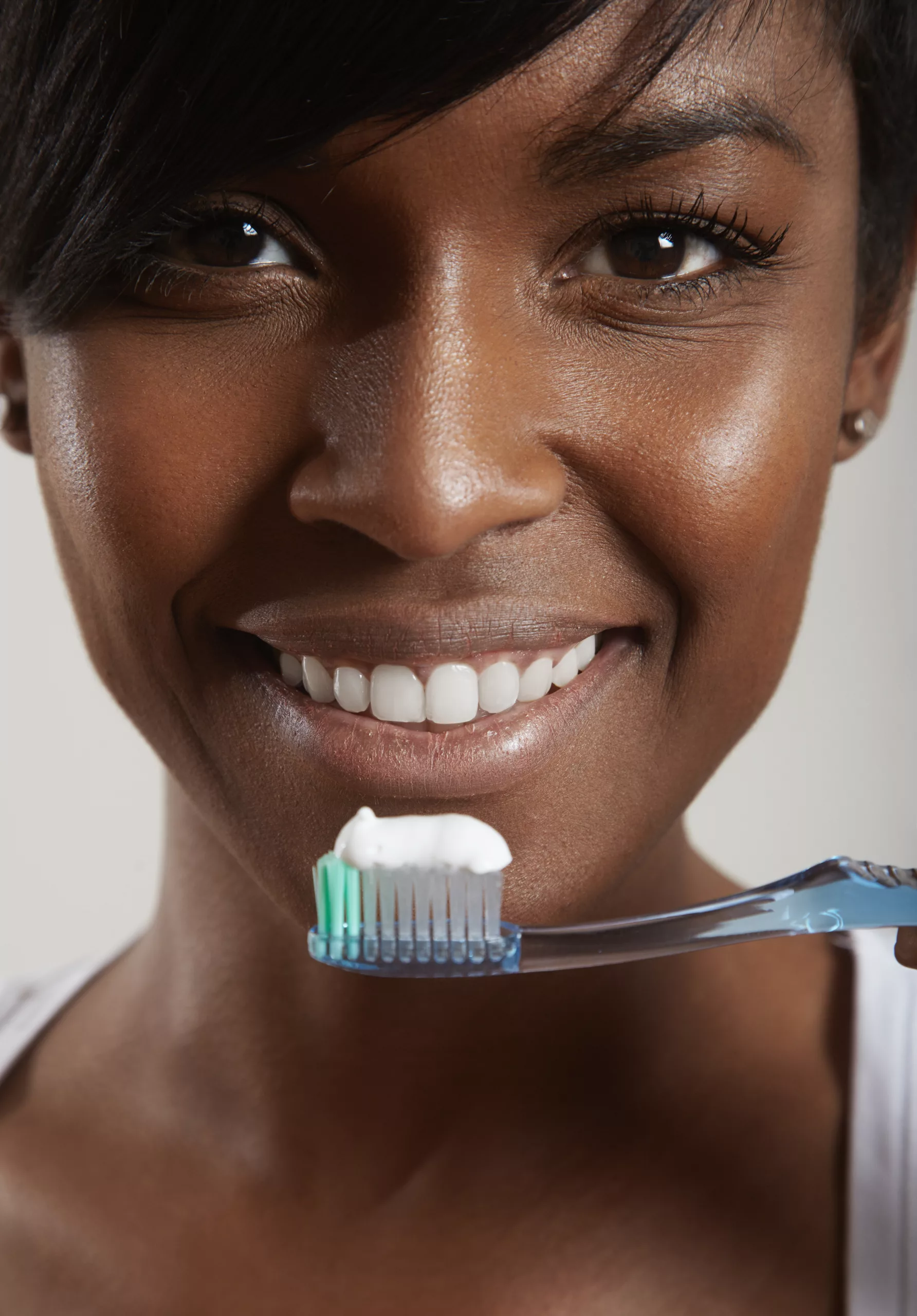The Benefits of Fluoride Toothpaste for Dental Health
Introduction
We look at Benefits of Fluoride Toothpaste here at Toothpastes.co.uk
Dental health is an important aspect of overall well-being, as it affects not only your appearance, but also your confidence, speech, nutrition, and quality of life.
However, many people suffer from dental problems, such as tooth decay, gum disease, tooth sensitivity, and tooth loss.
According to the Oral Health Foundation, one in four adults in the UK have untreated tooth decay, and one in three children have tooth decay by the time they start school.
One of the most effective and easy ways to prevent and treat dental problems is to use fluoride toothpaste.
Fluoride is a natural mineral that helps to strengthen your teeth and protect them from acid erosion and bacterial attack. Fluoride toothpaste has been proven to reduce the risk of cavities by up to 40% compared to non-fluoridated toothpaste.
In this article, we will explain how fluoride toothpaste works and what are its benefits for your dental health.
How does fluoride toothpaste work?
Fluoride toothpaste works by combining mechanical and chemical actions to clean and protect your teeth.
The mechanical action is provided by the abrasives and detergents in the toothpaste, which physically remove plaque and stains from the teeth surface.
The chemical action is provided by the fluoride and other active ingredients in the toothpaste, which chemically interact with the teeth and saliva to prevent decay and disease.
The chemical action of fluoride toothpaste depends on several factors, such as:
The concentration of fluoride:
The concentration of fluoride in toothpaste determines how effective it is in preventing decay and disease.
A higher concentration of fluoride can provide more protection against cavities, but it can also increase the risk of fluorosis (a condition that causes white spots or stains on teeth) in children under six years old.
A lower concentration of fluoride may not be sufficient to prevent cavities in high-risk individuals, such as those with dry mouth, braces, or frequent snacking habits.
Most commercial brands contain between 1,350 ppm and 1,450 ppm of fluoride, usually in the form of sodium fluoride or sodium monofluorophosphate.
High-fluoride toothpaste generally contains 1.1 percent (5,000 ppm) sodium fluoride and is typically used in adults with extensive tooth damage or medical conditions that place them at risk of cavities4.
The pH of toothpaste and saliva:
The pH of toothpaste and saliva affects the chemical action of fluoride toothpaste.
The pH is a measure of how acidic or alkaline a substance is. A lower pH means more acidic, while a higher pH means more alkaline. The normal pH of saliva is around 6.5 to 7.5, which is slightly alkaline5.
The pH of toothpaste varies depending on the ingredients, but it is usually around 6.0 to 8.0, which is neutral to slightly alkaline. The pH of toothpaste and saliva influences the solubility and availability of fluoride in toothpaste.
A lower pH can increase the solubility and availability of fluoride, but it can also increase the demineralization and erosion of enamel. A higher pH can decrease the solubility and availability of fluoride, but it can also decrease the demineralization and erosion of enamel.
The contact time between toothpaste and teeth:
The contact time between toothpaste and teeth affects the chemical action of fluoride toothpaste.
The longer the contact time, the more exposure the teeth have to fluoride and other active ingredients in toothpaste. The contact time depends on several factors, such as:
The frequency and duration of brushing:
The frequency and duration of brushing influence the contact time between toothpaste and teeth. It is recommended to brush your teeth at least twice a day for at least two minutes each time.
Brushing more frequently or longer can increase the contact time between toothpaste and teeth, but it can also cause overbrushing, which can damage the enamel or gums.
The rinsing habits after brushing:
The rinsing habits after brushing also affect the contact time between toothpaste and teeth.
It is advised to spit out the excess toothpaste after brushing, but not to rinse your mouth with water or mouthwash immediately.
Rinsing your mouth right away can wash away the fluoride and other active ingredients from your teeth, reducing their effectiveness.
It is better to wait for at least 30 minutes before rinsing your mouth to allow the fluoride and other active ingredients to be absorbed by your teeth.
What are the Benefits of Fluoride Toothpaste?
Fluoride toothpaste provides an additional layer of protection against dental decay and plaque buildup. Some of the benefits of fluoride toothpaste are:
It strengthens the enamel:
Fluoride helps to strengthen the enamel, which is the hard outer layer of the tooth that protects it from decay and erosion.
Fluoride does this by bonding to the areas of decay and attracting other minerals, such as calcium and phosphate, to the site of the damage.
This process is called remineralization, and it helps to repair the early stages of tooth decay and prevent further damage.
It prevents cavities:
Fluoride also helps to prevent cavities, which are holes in the teeth caused by acid-producing bacteria in plaque.
Fluoride does this by stimulating the production of fluorapatite, a type of tooth enamel that is highly resistant to acids and bacteria.
Fluorapatite forms a protective layer over the enamel and blocks the tubules in the dentin, which are tiny channels that connect to the nerves inside the teeth.
By blocking these tubules, fluoride reduces the sensitivity and pain caused by cavities.
It fights plaque and gingivitis:
Fluoride also helps to fight plaque and gingivitis, which are common causes of gum disease.
Plaque is a sticky film that constantly forms on the teeth and contains millions of bacteria. Gingivitis is a mild form of gum disease that causes inflammation, redness, and bleeding of the gums.
Fluoride does this by exerting antibacterial properties that not only inhibit the growth of bacteria but prevent them from sticking to the teeth.
By reducing plaque and gingivitis, fluoride also reduces bad breath and improves oral hygiene.
It whitens teeth:
Fluoride also helps to whiten teeth by removing stains and discoloration caused by food, drinks, tobacco, or aging.
Fluoride does this by enhancing the abrasiveness of toothpaste, which helps to scrub away stains from the teeth surface.
Fluoride also helps to prevent new stains from forming by strengthening the enamel and making it less porous and more resistant to staining agents.
Conclusion of Benefits of Fluoride Toothpaste
Fluoride toothpaste is one of the most essential products for maintaining oral hygiene and preventing dental problems.
By using fluoride toothpaste regularly, you can enjoy the benefits of stronger, healthier, and whiter teeth. However, fluoride toothpaste alone is not enough to ensure optimal dental health.
You also need to follow other oral care practices, such as flossing daily, visiting your dentist regularly, eating a balanced diet, and avoiding tobacco and excessive alcohol.
If you want to learn more about fluoride toothpaste or other oral care products, please visit our website at Toothpastes.co.uk.
We offer a wide range of information and resources on fluoride toothpaste and other dental care products that can help you improve your smile and your health.
References
- [Fluoride – NHS]: This is a comprehensive and reliable source that explains what fluoride is, how it works, and how it can help prevent tooth decay. It also provides information on fluoride toothpaste, mouth rinses, and varnish, as well as the recommended amounts and frequency of use for different age groups.
- [Fluoride in toothpaste: What it does, is it safe? – Medical News Today]: This is an informative and up-to-date source that covers the benefits and risks of fluoride in toothpaste. It also discusses the factors that affect the chemical action of fluoride, such as the concentration, pH, and contact time. It also gives some tips on how to choose the best toothpaste for your needs.
- [Fluoride Toothpaste: The Benefits of Using It – Sportskeeda]: This is a brief and simple source that summarizes the main benefits of using fluoride toothpaste. It also mentions some of the common dental problems that fluoride can help prevent or treat.



Leave a Reply